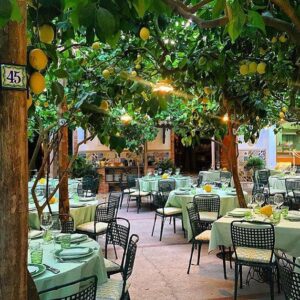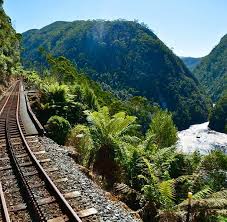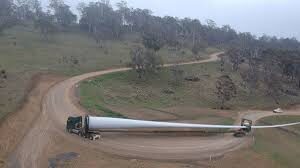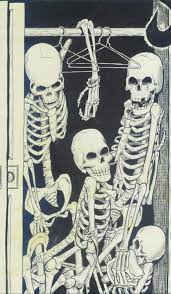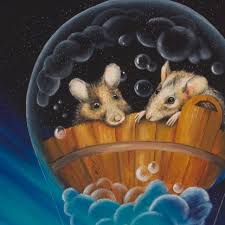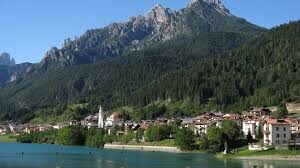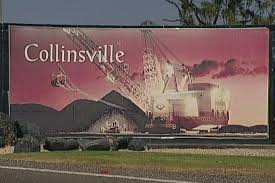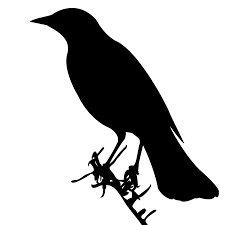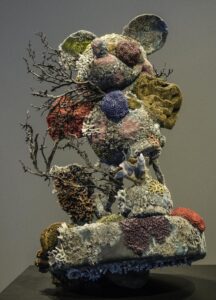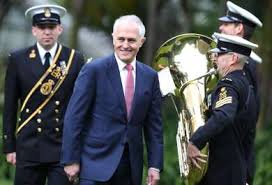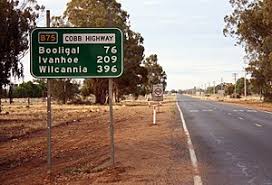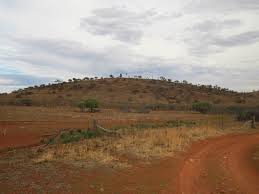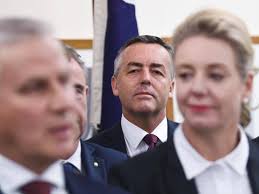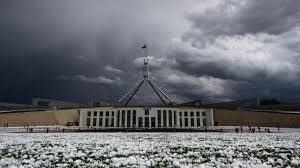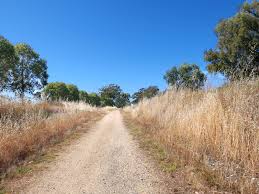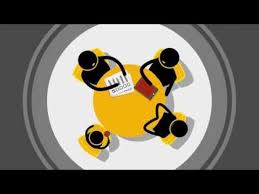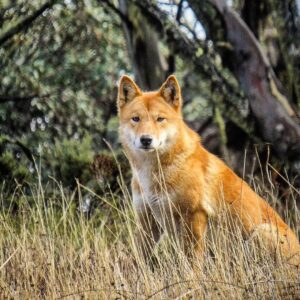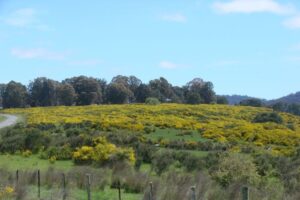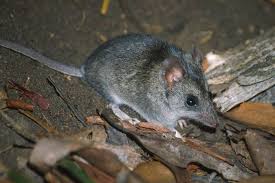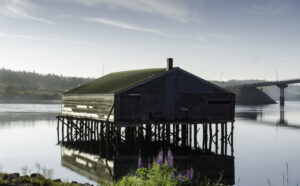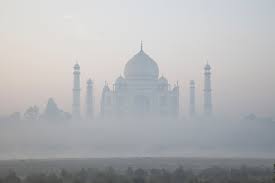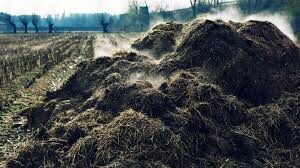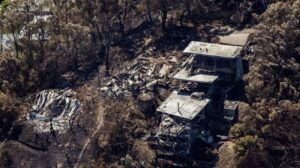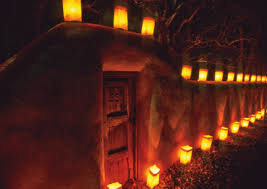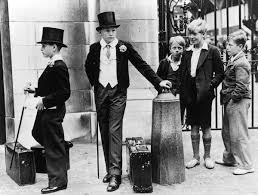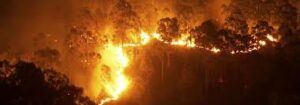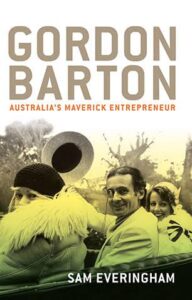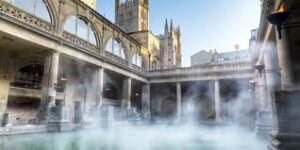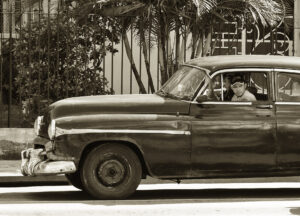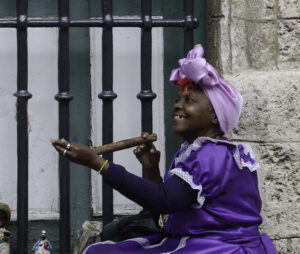The Orange Toddler she calls him. She, our American friend, agrees that the vaccine should be tested, but the chosen vaccine should first be provided to the Great Leader. He has spruiked it – he must be made invincible. To mark the occasion in the Oval Office he must be surrounded by adoring people wearing white coats, but definitely without masks, unless made by his beloved daughter. There will be commemorative syringes for all.

That will give the American people confidence; he to bare his arm for America; the test as no other test has been seen by anybody; and then to cap it off, perhaps a couple of days, maybe a week later, who knows – the flock of white coats will be reassembled while COVID-19 is directly injected into the OT. Then he will turn, give the syringe with the Presidential seal to an adoring fan, saying that there has not been anybody ever, perhaps with the exception of Jesus Christ himself, who has done so much for America, to make it great.
No, you’re dreaming. That won’t happen because he says he has a deformity of his body, which precludes injection – too much Ancient Orange.
Maybe Sarah Cooper will be a suitable surrogate.
Hunted? Not quite
How predictable, the sanctimonious Hunt, the Minister for Health egged on by the Prime Minister, trying to blame Premier Andrews for the ills of Victoria, including the failed nursing home system. Nevertheless, a small history lesson is probably useful to dispel some of the information about Daniel Andrews.
The problem with Victoria is that for years now it has not had a Department of Health but a “Department of Social Reform”, reflecting a social service bias at the expense of public health. Health is hospitals – full stop. That was the conventional wisdom.
The Heads of the Department have traditionally not been medically qualified. The structure of the Health Department was separated into Health, Hospitals and Mental Health, then unified for a time under a doctor, Gad Trevaks, when he chaired the then Health Commission.
That was the last time, and the real source of the decline in public health was due to Premier Kennett and his agent John Paterson, who effectively destroyed any remnant of public health considerations in the State. At the same time regulations have been loosened and, as one insider has said, food regulation and the lack of public health surveillance of food safety will be another problem that Premier Andrews will have to confront at some time.
Thus public health was in a woeful state even before the minions in the Victorian Treasury insisted on so-called “efficiency gains”, which is just a way of reducing public funding.
Then there was the case of a former chief health officer who was largely invisible during the time of his appointment and nobody seemed to care. Raina McIntyre, an outspoken epidemiologist, has commented wryly: “… such a minimalist system can get by during the good times but will be exposed in the pandemic”.
As Andrews has emphasised, this is an area where political point scoring is pernicious. It is more laughable than pernicious to hear the NSW Premier saying that she has a public health department, which “was second to none”, when the Chief Health Officer, Dr Kerry Chant, who is responsible for public health, was lucky to keep her job after the Ruby Princess and Newmarch House debacles.
After all, she has been in the job for 12 years, and was an inheritor, as were her public health colleagues, of the work done by Dr Sue Morey when she was Chief Health Officer. Dr Morey not only supervised the introduction of the contact tracing system but also enabled the public health medical officers to be recognised as medical specialists. As a result, in relationship to Victoria the public health doctors in NSW are far better remunerated. Many of those NSW public health doctors were trained by Dr Morey, who had gained formal public health training, resulting in a Master of Public Health from the Harvard School of Public Health in 1980. She set in place the public health system that is now being described as the Australian “gold standard”; it did not appear overnight. It is after all only a tool and it demands competence in its usage.
Strangled by a Thread of Cotton
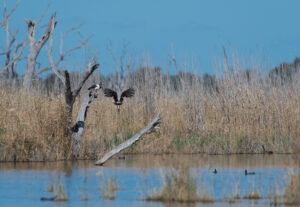
To me the Macquarie Marshes have always been one of the important bellwethers as to the health of the Murray Darling region. I have read much about them, but until this week had never visited. The marshes are located on the Macquarie River and lie some two hundred kilometres north-west of Dubbo, between Warren and Carinda.
To put them into context, the Marshes are an extensive wetland system covering more than 150,000 hectares, and the nature reserve covers 18,500 hectares of it. It is recognised as a Wetland of International Importance (but not by the NSW government). Most of the Marshes are in fact on private land.
The Marshes are arbitrarily subdivided into the northern and southern segment. There is more water in the latter. Importantly at present there is water in the marshes and there is abundant bird life. Black and white magpie geese swoop low as coots, ducks and a swan glide across one of the many lakes. The signs of the Marshes having periodically dried up are evident in the dead reeds where fires have wrought irreparable damage when there was no water. Across the water cormorants perch on the dead trunk, silent witnesses to the dying marshes.
Yet another sign of the degradation of the Marshes is the yellow rape mustard weed growing wild throughout the marsh areas that still are more or less dry.
The ultimate sustainability of these Marshes, even now after heavy rains have returned water there, is dictated by the cotton industry. The huge broad acres of black soil being prepared for planting near Warren attest to the nature of the enemy.
Originally it was the building of the Burrendong and Windamere Dams in the 1960s and 1880s respectively, which had diverted the wetland water to irrigation, and in so doing challenged the future of the Marshes.
That sets the picture for this almost lost resource.
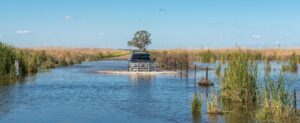
We stop where the water is running across the track – 100 metres wide and from the flood post at a level of about 0.4 metres. A large 4WD lurching into a hole and then struggling out only to sink again in the running water before blundering through set the tone for the crossing. We did not attempt to cross, but had lunch at the edge of the stream. Another 4WD stopped on the other side had released a bunch of kids who set out their beach towels on the track and took advantage of a swimming opportunity.
A couple of ATVs containing a number of boisterous teenagers went by, charging into the water. They knew where to go, they clung to the right side next to the fence line. There were no holes on that side – no problems – across and gone with all round waves to those of us left behind. “Local kids”, the weathered face who appeared at the car window said.
He was a seasoned farmer who had stopped with his family, and came across to see who “these foreigners” were. He ran shorthorn Hereford cattle on a property north of Carinda – a place where he said the best cotton in the world could be grown. He was on an afternoon drive with his daughter who had brought visitors from Norway to see the Marshes.
However, the problem is that Warren always took the bulk of the water, and thus Carinda – 140kms further north – hardly received enough water to sow a crop – maybe once in ten years, despite its capacity to produce premium cotton.
His attitude is a microcosm of the problem of Murray Darling River planning. Nobody agrees. It is a free for all, with each person, each municipality, having no consideration for the people of the catchment as a whole. Why should they? Their role model – their various governments seem hell bent on fracturing the Federation. Why not add compromising the nation’s water to a deteriorating concern for country?
The Pub in the Scrub
It is but a speck on the map between Condobolin and Tullamore. Here there is a typical two-storied, corrugated iron roofed country hotel, with a bright orange tiled façade. It luxuriates in the soubriquet of The Pub in the Scrub. Its name, which also is the name of this hamlet, is Fifield. The hamlet is empty, apart from a murder of crows having a convention in the main street and a ute parked against the kerb in front of the pub.
Near the geographic centre of NSW, Fifield is surrounded by blazing yellow broad acres of canola. It was once the site for alluvial exploration for platinum and there is a sign nearby pointing to a place called Platina.
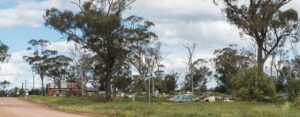
However, Fifield is a graveyard for car bodies. They are everywhere. There is an old barn, unusually with a chimney but now ramshackle, despite the incongruous new solar panels on the roof. Acres of car bodies behind the building are spread on the other side of the main road, the whole extent of which is hidden by trees. The fact there was a newish bright yellow Ford in front of the barn seems to confirm that the building was occupied.
The oval was covered in cape weed; there was once a tennis court, now overgrown, but with its net still in place and the rusted gate still visible. A disused wooden church on the corner with a handwritten sign which says “St Dymphna”, who can identified as the Lily of Ireland, the patron saint of mental illness.
However, on the road as you enter town there is a bright black and yellow sign exhorting the passing motorist not to dump rubbish – or else. Unless of course, it’s your car.
Ah, the wonderful irony of Australia.
Yuranigh
When I used to walk close to my old home among the trees which dotted the sloping land that had been preserved around the Melbourne Cricket Ground, I would come across a canoe tree where, before whitefella settlement, the Wurrundjeri people had carved a canoe from the bark.
Canoe trees were probably more common than have been found, but civilisation has a way of destroying heritage. Maybe many trees so used for canoes, shields, coolamons and other artefacts just did not survive. After all, before the whitefella came with his tree-felling prowess, there would have been open forest where the city now stands. Not surprisingly the river red gum with its stout trunk was a favourite source of bark. Bark was plentiful. Bark was the only resource they had for their canoes as there is no evidence that the dugout canoe of their Northern Australian brothers ever percolated south.
Yet the bark canoe was obviously important given the number of rivers and watercourses that flowed around and through the land which whitefellas labelled Melbourne. It is surprising so many of the trees survived so close to the centre of Melbourne
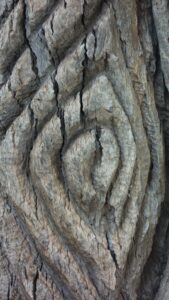
This reflection on tree carving was at the forefront of my mind when we visited the grave of Yuranigh. His grave lies a few kilometres east of Molong, a central west NSW town just off the highway to Orange.
The directions are well marked, the track is stony clay, there is a gate and a cattle grid, and then a short drive where old gnarled yellow box gums hold sway over a weed infested paddock. This is where Yuranigh is buried. Little is known about this Wiradjeri man except that he accompanied Thomas Mitchell to the Gulf of Carpentaria on one of Mitchell’s explorations.
Mitchell thought so much of this man that when Yuranigh died when still a young man, Mitchell paid for his grave and a marble headstone commemorating Yuranigh. It is apparently recognised as the one site in Australia where European and Aboriginal burial traditions coincide.
Around the area where Yuranigh is buried are carved trees, sinuous dendroglyphs etched into the heart of the trees – complex cuts given the tools that would have been used. The most prominent one of these is a stump protected from the weather, an extraordinary example of Wiradjeri art. It had lain for years on the ground, before being raised and now supported in a concrete base
There is another tree close by where the artwork can be viewed through a slit in the tree – the carving lying within the tree. There are four trees that define the corners of the gravesite, but some have defiantly repaired themselves and in so doing smothered the artwork.
We were alone at the site. Despite the complexity of what we were witnessing – an intertwined image where we could see original Wiradjeri work in all its complexity but only guessing as to meaning not only of the carving but also its placement in relation to Yuranigh’s burial place, I realise I know so very little.
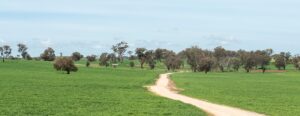
Yes, I understand Mitchell’s tribute. That’s how we whitefellas celebrate dying in a world of grey – the compromise between white and black in our monuments and headstones. But the trees are not confected – they are real. In blackfella eyes Yuranigh obviously was a great Aboriginal man; the carvings denote respect. Otherwise who would take such care? “Sorry business” is such an important part of Aboriginal life.
John is not the Name
When I go to a bank or any other place where the interaction is usually with a younger generation, far younger than my “silent generation”, I find being addressed by my Christian name jarring to say the least. I quickly correct them on most occasions.
After all we have a surname for a reason, whether derived by being the “son of “, colour (white, black, brown), profession (fletcher, butcher, smith), location (London, Birmingham, Kent).
I come from a generation when every male at least addressed each other by “surname”. However, within the family and friends circle, we were called by our Christian names.
I find calling elderly people by their first name, as if they are children, unsettling. I would object to a stray carer that I have never seen before, calling me by first name. Using “John” jars just because they have seen that on some of my documentation, because those who know me call me “Jack”. Address me by my surname please.
Having thus aggressively put my point of view, my cousin told me a salutary story about his uncle. His uncle Jack went to get a job on the wharves.
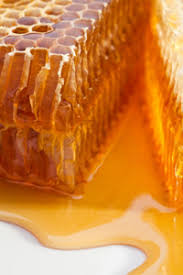
He was asked his name.
“Jack,” his uncle replied.
“Look, feller, on these wharves we deal in surnames. What’s your surname?”
“Honey.”
“Well, Jack, it is …!” came the immediate reply.
One against me.
Mudgee Mud
It is about 40 years since we were in Mudgee. We came to the inaugural Mudgee Wine Festival. It was a spur of the moment decision. I asked her. She said yes. Now years later, the trip was not so romantic; you know, she said as we were driving there, “We came here in 1980. Have you been to Mudgee since?” I had travelled widely around this part of NSW and for a time I often visited Dubbo, spent time at Bathurst, found some delightful antiques at Molong and had been to Glen Davis on more than one occasion – but Mudgee?
Forty years ago, Mudgee wines were dismissed with the label “Mudgee Mud.” Give something a bad name and I doubt whether even after exposure of the wine at the Festival was sufficient for me to ever buy some. It was still very indifferent wine.
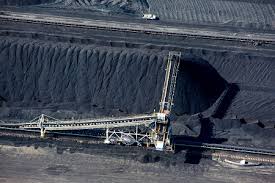
The dinner was an uproarious affair, as one of the guys who was a geologist had mapped the coal deposits around Ulan and was making or had made a financial bonanza out of his assiduous tracking of the coal deposits around those areas. At the time of the dinner he had secured the lease over the tail of the deposit. Forty years ago, coal as they said was king, and who had heard of climate change effects!
At the end of the night, we blokes had all got along so well, and there was so much bonhomie, that everybody was shickered. Out in the car park all the blokes got into the driver’s seats and the wives, who were by and large sober, were consigned to the passenger seats. There was one exception – the young lady whom I eventually was to marry years later – insisted on driving. Just as well.
The next morning I awoke, nursing a damaged head. We had stayed down the road at Kandos, famous for its limestone quarrying. Mudgee had been booked out. As we were leaving the motel owner noted that I was a doctor.
“Oh”, she cooed, “ We would love to have a young white doctor here in Kandos.”
Different times then, different times.
Mouse whisper
On the menu at the Italian restaurant in Griffith, it was stated that one could dine “al fresco”. Sounds authentic – just as the names of any the pastas or “il cotoletta Milanese” were authentic italiano.
The term al fresco is unknown in Italy. If you want to dine outside (fuori) or in the open (all’aperto”), you will be directed to that leafy courtyard.
Thus, il cameriere will scratch il sua testa if you say “al fresco”. He may misunderstand and instead bring you acqua fresca – cold water.
